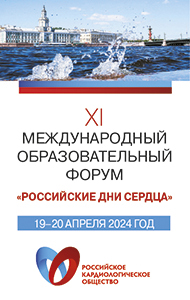New guideline focuses on management of adults with supraventricular tachycardia
October 7, 2015
The American College of Cardiology, American Heart Association and Heart Rhythm Society have released a guideline on best practices for management of adults with supraventricular tachycardia.
The guideline covers all forms of supraventricular tachycardia (SVT) except atrial fibrillation, which has its own guideline.
Decision trees and recommendations
The guideline includes decision trees on how to make a specific diagnosis of adults presenting with narrow QRS tachycardia, as well as how to treat and manage the following conditions: regular SVT of unknown mechanism, suspected acute focal atrial tachycardia, atrioventricular nodal reentrant tachycardia, orthodromic atrioventricular reentrant tachycardia, atrial flutter, junctional tachycardia and SVT in adults with congenital heart disease.
Vagal maneuvers and adenosine are recommended for acute treatment of regular SVT, whereas synchronized cardioversion is a viable alternative for patients with hemodynamically unstable SVT and, if pharmacological therapy is ineffective or contraindicated, for patients with hemodynamically stable SVT, Richard L. Page, MD, FACC, FAHA, FHRS, chair of the panel that wrote the guideline, and colleagues wrote.
According to the document, for ongoing management of patients with SVT, electrophysiological study with the option of ablation is useful and patients should be taught how to do vagal maneuvers. For those with symptomatic SVT without ventricular pre-excitation during sinus rhythm, the following medications are recommended: oral beta-blockers, diltiazem and verapamil. For certain patients with symptomatic SVT, flecainide, propafenone, sotalol, dofetilide, oral amiodarone or oral digoxin may be appropriate, Page, chair of the department of medicine at the University of Wisconsin School of Medicine and Public Health, Madison, and colleagues wrote.
For patients with inappropriate sinus tachycardia, doctors should look for and treat reversible causes, and ivabradine (Corlanor, Amgen), beta-blockers or a combination may be appropriate, according to the document.
Patients with hemodynamically unstable focal atrial tachycardia should undergo synchronized cardioversion, whereas those with hemodynamically stable focal atrial tachycardia can be treated with IV beta-blockers, diltiazem or verapamil in acute settings and adenosine, IV amiodarone or ibutilide in nonacute settings, according to the document. The panel noted that catheter ablation is a recommended alternative to medical therapy in these patients.
In patients with atrial flutter, oral dofetilide or IV ibutilide is strongly recommended for acute cardioversion. However, patients who are hemodynamically unstable and unresponsive to medication should have synchronized cardioversion.
Patients with adult congenital heart disease and SVT who are hemodynamically unstable should undergo synchronized cardioversion, according to the document.
Patient involvement key
“It is important that the patient be included in the clinical decision-making process, with consideration of his/her preferences and goals for therapy, as well as his/her unique physical, psychological and social situation,” the panel wrote. “The various choices for therapy, including drugs, cardioversion, invasive treatment or a combination thereof, can be confusing to the patient, so a detailed explanation of the benefits and risks must be included in the conversation.” – by Erik Swain
References:
Page RL, et al. Circulation. 2015;doi:10.1161/CIR.0000000000000310.
Page RL, et al. Heart Rhythm. 2015;doi:10.1016/j.hrthm.2015.09.018.
Page RL, et al. J Am Coll Cardiol. 2015;doi:10.1016/j.jacc.2015.09.019.
Disclosure: Page reports no relevant financial disclosures. See the full guideline for a list of the relevant financial disclosures of the other writers and reviewers.
Source: www.healio.com






